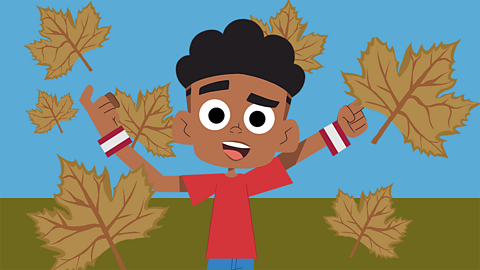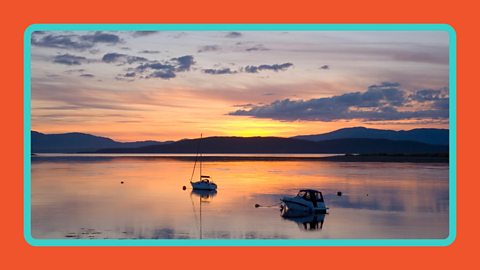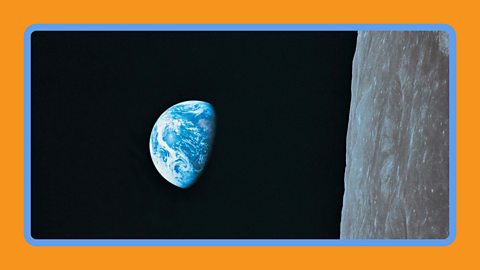What is day and night?
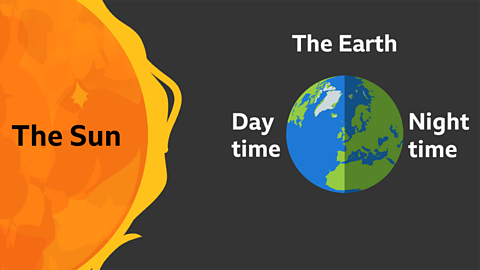
Daytime and night-time
The Sun is the star at the centre of our solar system. Earth and the other planets orbit around it, and also rotate themselves.
This means that the Sun only shines on half of the Earth at once. As the Earth rotates, some parts of the world will face away from the Sun and will get dark whereas some parts of the world will move into the Sun's light.
When the Sun's light is shining on an area, we call it daytime. When an area is in darkness, we call it night-time.

Seasonal changes
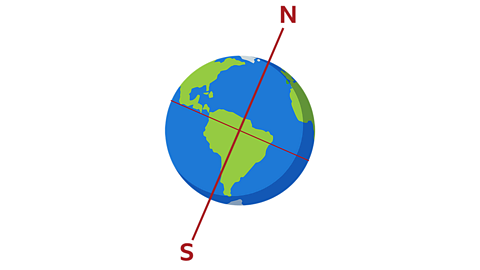
In the UK, we have four seasons: spring, summer, autumn and winter.
Our planet Earth actually tilted. This means that at certain times in our year, part of the Earth will be closer to or further away from the Sun. This is what causes seasons.
When the Earth is tilted towards the Sun, it gets more of the Sun's heat and light, this is why we get longer days and warmer weather nearer spring and much more in summer.
It is the same for when the Earth is tilted away from the Sun, it gets less of the Sun's heat and light, this is why we get shorter days and colder weather in autumn and winter.
The Earth takes 365 days to orbit around the Sun. We call this a year.

Watch: What is day and night?
Understanding why we have day and night.
Video transcript for 'Day and night'
SEYMOUR: Hello, Seymour Science here! As we all know, sometimes it’s day… and sometimes it’s night… but why do we have day & night? My guest today is here to tell us! Ladies and Gentlemen… Rosie!
ROSIE: Thanks Seymour! Many of us live in villages, towns or cities… but these are all part of one big place that we call… Planet Earth! Earth is lit up by the Sun —
SEYMOUR: which is a star!
ROSIE: That’s right. There are billions of other stars similar to the Sun, most are even bigger… they're just much further away, so look really small. Our planet spins on an invisible line — called ‘an axis’. Half of the Earth is always facing the Sun, meaning it is lit up. The other half is in darkness until the planet turns around. That’s why we have day and night!
SEYMOUR: The Sun keeps us warm too, right?
ROSIE: That’s right! The Sun is a HUGE ball of gas, MUCH bigger than Earth, and the gas is exploding all the time, so it gets very hot and very bright.
SEYMOUR: But what about the moon?
ROSIE: The moon can look bright too— but that’s because sunlight bounces off it, helping us see at night!
SEYMOUR: Now for the really clever stuff!
ROSIE: The Earth takes one day to completely spin around…and it takes about a month for the moon to go all the way around the Earth in a circle,
SEYMOUR: we call this an orbit!
ROSIE: and then it take a whole year for both of them to go all the way around the Sun. So this is how we measure days, and months and years.
SEYMOUR: Like I said… clever!
MUM: I hope you two aren’t making a mess up there!
SEYMOUR: Ooh, got to go!
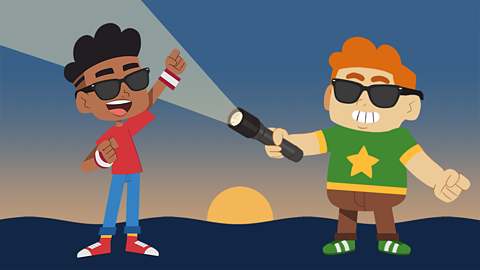
Fascinating night and day facts
Our seasons happen because of the way the Earth is tilted.
The Earth takes 365 days (one year) to travel in an orbit the Sun.
In Svalbard, Norway, which is north of the Arctic Circle, there is no night time between April and August, and the Sun never sets. During the same period at the South Pole in Antarctica, the Sun never rises.
The UK summer solstice is in mid-June. This the longest period of daylight hours that we see.
The UK winter solstice is in mid-December. This the shortest period of daylight hours.
The Earth rotates at a speed of around 1040 miles per hour.

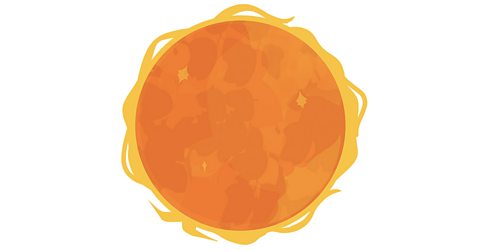
Daylight hours
In the UK, we have four seasons: spring, summer, autumn and winter.
The number of daylight hours changes throughout the seasons too, for example we get lots of daylight hours in summer and fewer night-time hours and much fewer daylight hours in winter and much longer night-time hours.
| Spring | Summer | Autumn | Winter | |
|---|---|---|---|---|
| Months | March, April, May | June, July, August | September, October, November | December, January, February |
| Weather | Warmer, rain and sunny | Hot and sunny | Colder, wind and rain | Cold and icy |
| Daylight hours | 11-15 hours | 14-16 hours | 8-12 hours | 7-10 hours |

Day and night
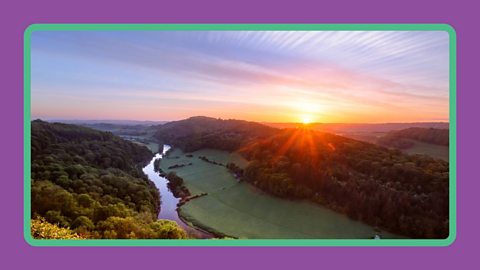
Image caption, Sunrise
The Sun only shines on half of the Earth at once. In the UK it rises in the east, starting the day.
1 of 3

Did you know?
Weather is what we experience day to day.
We can say that each season has a typical type of weather. For example summer is typically hot and sunny, and winter is typically cold, but it doesn't mean the weather will always be like that.

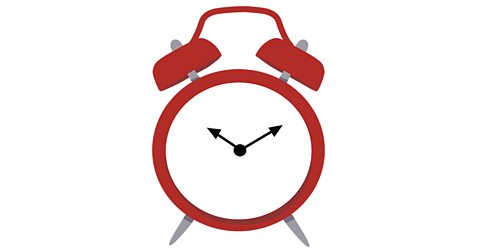
Important words
Daylight hours – The hours of light and day time we see in a day.
Daytime – The time of day when that part of the Earth is facing the Sun.
Earth – Our home planet, the third furthest from the Sun after Mercury and Venus.
Night-time – The time of day when that part of the Earth is facing away from the Sun so it is in darkness.
Orbit – The curved path of a object which moves around something that has gravity, like a planet moving around the Sun.
Seasons – The way our calendar is split up into spring, summer, autumn and winter.
Solar system – The system of planets, moons and asteroids that orbit the Sun.
Sun – The star at the centre of our solar system. The Earth and the other seven planets orbit around the Sun.
Weather – The current state of the atmosphere. It can be sunny, rainy, windy, stormy, cloudy, icy or snowy.
The Article circle – Is an imaginary line that circles around the top of the globe.
Summer solstice – The summer solstice is the 'longest' day of the year.
Winter solstice – The winter solstice is the 'shortest' day of the year.

Activities
Activity 1 – Finding night and day
Activity 2 – Quiz
Activity 3 – Sun watching
Easter Holidays Activity Pack activity
Check out some Easter inspired activities to complete in the Easter Holidays, for KS1.

More on Seasonal changes
Find out more by working through a topic
- count1 of 2
